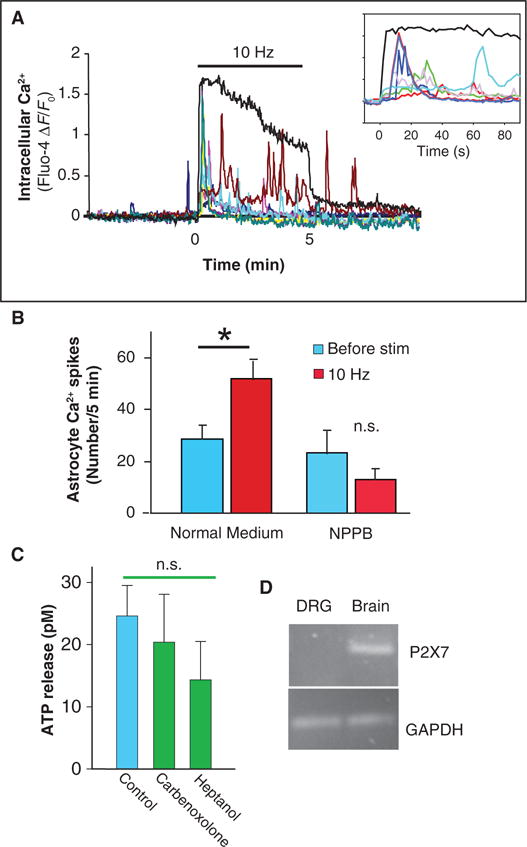Fig. 6.

Nonsynaptic activity-dependent communication between axons and astrocytes by ATP release through VAACs. (A) Action potentials were stimulated in DRG neurons grown in coculture with astrocytes, and calcium responses were measured with Fluo-4 AM. Action potentials elicited a rapid rise in intracellular calcium in DRG axons (black trace), followed by calcium responses in astrocytes (colored traces; each trace represents a different astrocyte in the same microscope field). DRG axons were stimulated at 10 Hz for 5 min. Inset shows the same data on an expanded scale; note delayed glial response. (B) The number of calcium spikes in astrocytes during a 5-min stimulation period (red bars) was compared to the number of responses 5 min before stimulation (blue bars) from multiple experiments (n = 9). Stimulation of axons significantly increased the number of calcium responses in astrocytes, but this was blocked by pretreatment with the chloride channel blocker NPPB (100 μM). NPPB had no significant effect on the frequency of spontaneous astrocytic calcium spikes before stimulation (blue) (*P = 0.018, n = 9; n.s., not significant). (C) Release of ATP from DRG axons, in response to action potential firing (10 Hz, 5 min), was not blocked by gap junction blockers carbenoxolone and heptanol (green bars) (P = 0.48, ANOVA; n = 16, 12, and 14). (D) PCR failed to detect P2X7 receptors in DRG neurons, which can release ATP from some nonneuronal cells. GAPDH is a loading control, and mRNA from brain is a positive control.
